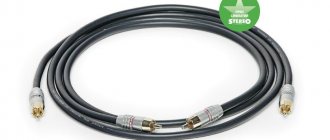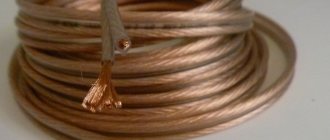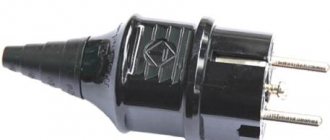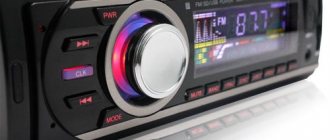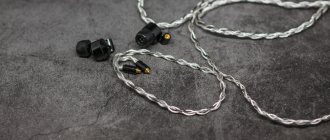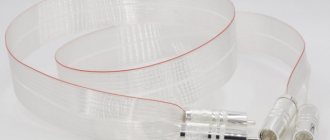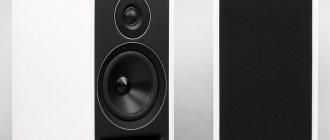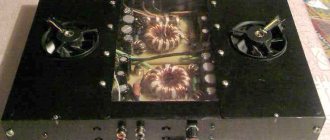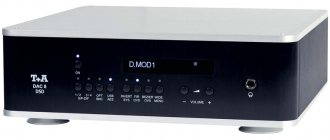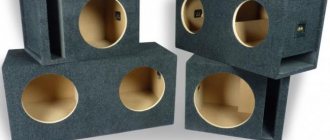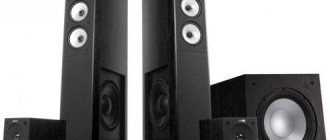Introduced fifteen years ago, cables with carbon conductors, which were invented by the famous specialist in High End Audio Van den Hoole, still have no analogues. The Dutch experimenter continues to amaze the audiophile world even now.
- 3T The Sea Hybrid RCA
- 3T The Rock Hybrid XLR
- 3T The Hill Hybrid RCA & 3T The Hill Hybrid XLR
- 3T The Cliff Hybrid RCA
- 3T The Mountain Hybrid RCA & 3T The Mountain Hybrid XLR
Van den Hoole's next know-how is hybrid cables that combine the advantages of two types of conductors: metallic, with low electrical resistance, and non-metallic, devoid of a crystalline internal structure. The Dutch engineer spent the last decade creating materials with similar properties, and the result of this work was implemented in cables of the True Transmission Technology (3T) series. In these, Van den Hoole uses a combination of their Linear Structured Carbon (LSC) fibers with conductors made from a proprietary five-metal alloy recipe. By the way, there is no gold, platinum, or silver among them, so the price of cables does not depend on the quotes of precious metals on the world exchange. Silver-plated copper braids are used in 3T cables only as a shield. The polymetallic conductor has a slightly higher active resistance than the traditional one, but the amorphous structure made it possible to increase the detail and dynamics when transmitting a musical signal, especially in the ranges of 40 - 200 Hz and 2 - 15 kHz. Among other advantages of 3T cables it is worth noting:
— No mechanical or chemical aging of the materials included in the cable. Accordingly, a long service life, up to 25 years, without any changes in the sound character.
— Lack of harmful chemicals, in particular chlorine compounds and other halogens.
— High flexibility and mechanical tensile strength, resistance to high temperatures (relevant for car audio).
- Short warm-up time - after about a couple of hours of operation, the cables “get their voice”, and on the third day they are able to demonstrate all their talents.
The most representative representatives of the new series were selected for our test - interconnect cables from entry-level to top-end. For comparison, some models are presented in a balanced version of the same length.
The tests were carried out using a well-proven method. Each cable in the RCA version was first compared to the jumper connecting the pre- and tail sections of the Bryston amplifier ("hard test"). At the second stage, the test sample was connected between the source and the amplifier, replacing our reference interconnect (“comparative test”). I will not name its brand, but will only mention that this is a serious symmetrical cable of a classic audiophile design - with conductors made of PC-OCC monocrystalline copper with fluoroplastic insulation. And if the first experiment made it possible to note formal differences in sound, then a comparison with a traditional copper cable made it clear how 3T technology affects the musicality of the audio system as a whole.
An important detail for these two experiments: the Chord Hugo DAC amplifier was chosen as the source, with the help of which the highest quality music files in DXD or DSD format were decoded, played on a battery-powered laptop. Such content is very demanding on the path, so it is easy to notice even the slightest changes in sound.
Balanced cables were compared with RCA versions in a sound path composed of a Bryston BCD-1 CD player and an Oppo HA-1 telephone amplifier, components with XLR inputs and outputs.
COMPONENTS
Laptop Apple MacBook Air A1465
Chord Hugo
converter-amplifier
Bryston B-100 SST
integrated amplifier , Monitor Audio Gold Reference 20 speaker systems
, Oppo PM-1 stereo phones
.
Cables: Kimber Kable 12TC
Audioquest VDM-3
digital coaxial
Furutech GT-2
USB ,
Physics Style PW-Reference power
and
Supra LoRad CS-EU 1.5
+
LoRad MD-06-EU Mk II
.
3T The Sea Hybrid RCA
Length: 0.8 m
Price: €263
One of the most accessible interconnects in the series. It has a simple coaxial design with a central 3T solid core with a diameter of 0.4 mm and a screen woven from thin 3T cores and silver-plated copper. Between the conductor and the braid there is an intermediate layer of linear structured carbon (LSC), which absorbs the energy emitted during the passage of the signal. To prevent contaminants from the surrounding atmosphere from penetrating into the conductor, the latter is protected by a layer of dense insulation. The outer shell is a pleasant blue color made of proprietary elastic material Hulliflex, which does not contain chlorine compounds.
Compact RCA connectors - with rhodium plated contact surfaces.
The Sea comes in a beautiful box that also includes the complete Van den Hul catalog and a hybrid (CD/SACD) disc of harpist Lavinia Major, recorded using VDH cables.
After listening to the jumper-shortened path, The Sea sounded neither bright (this character is typical of cables made from ordinary oxygen-free copper), nor smoothly melodious, like that of PC-OCC cables. At the same time, it cannot be classified as neutral. The edges of the range are slightly highlighted, the information content has noticeably increased (that’s right - there is an illusion that a path closed by a jumper is losing some elusive secondary details), but the dynamics seemed a little less expressive.
In the “comparative test” The Sea gave a clear gain in detail and spatial order - each source was localized better. But there was not always enough plasticity and harmonic order in the spectrum. However, from a technical point of view, the reproduction is impeccable; on some tracks it is emotional, even slightly aggressive.
An old friend is better than a new one
Price – 76,650 rubles per pair 1 meter long
Van den Hul. For true audio enthusiasts, there is no need to introduce the company or the person behind it. He managed to create a brand, at the mention of which any audiophile, if not in awe, is filled with real respect. For many decades, the company's name has been associated with some of the world's best vinyl pickups, as well as original analog cable designs.
From time to time, the company also released electronic components to the market, and their production was resumed several years ago. Today the company's product range includes two high-quality phono stages, as well as a set of preamplifiers and monophonic power amplifiers. However, in this article we will look at more traditional van den Hul products. We will talk about interconnect and speaker cables made using 3T technology developed several years ago. I was lucky to get acquainted with the first samples of such cables right in the year they appeared on the market, and also to hear a heartfelt speech about the advantages of 3T delivered by Mr. van den Hoole himself. However, only now have I had the opportunity to study them in detail in a familiar environment.
3T conductors are not subject to oxidation, chemical and mechanical aging, are free from metal fatigue problems, and also have an amorphous internal structure, which has a particularly beneficial effect on the transmission of low-level signals.
3T First, a few words about the 3T technology itself, the name of which stands for True Transmission Technology. As often happens in the world of audio cables and beyond, the manufacturer does not disclose all the details and subtleties. The main emphasis of the communication is that the production does not use traditional copper, silver, gold or platinum. This would be surprising for any other company, but van den Hul has long mastered the production of cables that use graphite fiber cores as conductors. The reason for refusing to use traditional metals was, according to the company, the desire to protect itself from speculative fluctuations in the cost of raw materials on the market. A fairly original rationale for the decision made for a manufacturer of audiophile products, but this technology has other advantages.
3T conductors are not subject to oxidation, chemical and mechanical aging, are free from metal fatigue problems, and also have an amorphous internal structure, which has a particularly beneficial effect on the transmission of low-level signals. Conductors made using this technology are tightly packed bundles of several carbon fiber strands, as well as unknown metals, the name of which Mr. van den Hoole refused to disclose when answering a direct question. Another advantage of van den Hul’s top models is their very moderate, by High End standards, cost. For an outside reader, such a statement made in relation to wires costing several thousand euros may seem strange, but experts are already accustomed to the fact that the top models of speaker cables from reputable manufacturers today can cost several tens of thousands of euros. Against their background, the models discussed in this article can easily be called a bargain.
The Cliff Let's start with the 3T The Cliff balanced interconnect cables. The 1 meter long pair is cut with black Neutrik connectors and enclosed in a beautiful box, which also contained a SACD disc with a recording of the Brandenburg Concerto by Johann Sebastian Bach. The wire itself bends well and has a yellow outer sheath made of the proprietary Hulliflex material. Structurally, the cable combines two pairs of cores, one of which is transmitting, and the second is return. The conscious decision was to completely abandon the use of a screen in order to achieve higher sound quality. I must say that this approach has a right to life; I have encountered situations where turning off the screen in the interconnect cable led to a subjective improvement in sound quality. Let's say right away that in our systems the absence of a screen did not lead to an increase in the level of electromagnetic interference.
The Cumulus The star of the company's line of speaker cables is the excellent 3T The Cumulus Hybrid. Today this is the best and, of course, the most expensive speaker cable in the van den Hul line. The high status of the model is confirmed by the packaging itself. Inside the bulky cardboard box was an impressive black suitcase, which contained the cable itself. However, he is not alone there - there is not only the already mentioned SACD disk, but also a jar of vdH The Solution for wiping contacts, as well as a proprietary tester for identifying and eliminating stray currents and electromagnetic fields in the system. A very interesting device with detailed instructions for use, according to the manufacturer, will not only allow you to correctly phase all components, but also ensure a minimum level of interference and noise.
However, he is not alone there - there is not only the already mentioned SACD disk, but also a jar of vdH Solution for wiping contacts, as well as a proprietary tester for identifying and eliminating stray currents and electromagnetic fields in the system.
The kit also comes with a set of removable threaded banana blades that allow you to replace the factory installed blades. The cable itself is a classic example of a top-end component, any questions “why is it so expensive?” disappear already at the unpacking stage. No wonder the manufacturer in the booklet about. This is perhaps one of the most monumental cables of traditional construction on the market - each section weighs as much as a small electronic component. This clearly adds advantages to solidity, but, at the same time, several disadvantages to ease of use.
Of course, no one will connect flimsy low-end equipment using such majestic wires, but not every high-end amplifier and speaker system has sufficiently strong and massive terminals that can firmly fix the powerful blades with which the 3T Cumulus is cut. Fortunately, there is the already mentioned opportunity to replace the blades on the fly with bananas, with them the connection is much easier. We had at our disposal a couple of 2.5-meter lengths, which is quite enough for most systems. Naturally, the company’s product range also includes longer speaker cables.
The Sound In addition to the traditional editorial system, consisting of Bryston electronics and PMC speaker systems, the testing involved the author's system, where the vdH 3T The Cumulus Hybrid speaker cable was connected between VTL monoblocks and classic JBL 4345 studio monitors, restored by the Japanese company Kenrick Sound. Each system ran the cables for 1-2 days before serious listening began.
Like most high-end cables, VdH 3T The Cumulus Hybrid can transform almost any system. They will raise a good one to new heights, make an excellent one excellent, but even an unsuccessful one will make it sound much better than its components seemed to allow.
As I already noted, I had the opportunity to get acquainted with the features of cables made using 3T technology back in the year they appeared on the market. Even with a fairly brief acquaintance in a system that was not entirely close to me, their style appeared very clearly - transparent and very detailed, “velvety”, the middle and well-developed edges of the range. Having presented itself in its final, so to speak, incarnation, 3T technology completely captivated me. To the already mentioned characteristics were added extremely detailed and weighty bass with good punch and impressive depth, as well as airy and very soft high frequencies.
It must be said that, like most high-end cables, VdH 3T The Cumulus Hybrid can transform almost any system. They will raise a good one to new heights, make an excellent one excellent, but even an unsuccessful one will make it sound much better than its components seemed to allow. Although the products of one of the founding members of the High End have not been as much in the ear of audiophiles lately as the new wave manufacturers that have recently arrived on the market, it would be an unforgivable oversight on the part of audio lovers not to include these cables in their listening list. Especially considering the very moderate price for models of this level.
Ratings
| + | Impressive design, with the highest resolution the sound remains soft and flexible | — | Not the most flexible or easy to handle speaker cables |
Design 95
Workmanship 95
Sounding 95
Ergonomics 90
Total 95
3T The Rock Hybrid XLR
Length: 0.8 m
Price: €546
According to Van den Hoole himself, The Rock is notable primarily for its price/quality ratio. This is the most affordable interconnect in the series, in which the 3T ideology is implemented not in a stripped-down form, as in the budget model, but completely. The cable has a symmetrical design with a pair of 3T center conductors, consisting of one core with a diameter of 0.4 mm and eleven cores with a diameter of 0.15 mm. The triple screen is a combination of two braids made of silver-plated copper, between which a layer of linear-structured carbon LSC is laid. This geometry completely eliminates the mutual influence of the conductors on each other. The outer shell of Hulliflex is yellow. The terminals used are black Neutrik NC-MXX XLR connectors with silver-plated contacts. In addition to the company catalogue, the thick cardboard box contains the CD “Great Recordings of the 50's”.
We received a balanced cable from The Rock for testing, but an RCA version with proprietary van den Hul tips, whose contacts are rhodium-plated, is also available. In this case, it was possible to evaluate the sound of The Rock taking into account two factors - a more complete implementation of the 3T principle, compared to The Sea, and some advantages of the balanced design. Indeed, when connected with this cable, the system is able to show even more detail, especially at the edges of the range. But in comparison with the copper “standard” the sound has a little less warmth and melodiousness. The Rock is an effective tweaking tool that can increase nuance and tonal resolution, for example, in a low-cost analogue path.
3T The Hill Hybrid RCA 3T The Hill Hybrid XLR
Length: 0.8 m
Price: €834
Externally, The Hill is similar to the previous model - there are no visible differences in either the diameter or the color of the outer shell made of Hulliflex polymer. However, this cable is of a much higher level. A pair of hybrid signal conductors (3T monocores with a diameter of 0.5 mm surrounded by LSC fibers) is protected by a four-layer shield consisting of two braids of silver-plated copper with two layers of linear-structured carbon. The RCA version uses van den Hul rhodium tips, while the balanced cables are equipped with Neutrik NC-MXX XLR connectors with silver-plated contacts.
In addition to the cables, the box contains a catalog and a CD by Lavinia Major, already known to us.
We had the opportunity to evaluate this model in both versions. The RCA version showed itself to be very neutral in the “hard” test. I did not notice any tonal loss, smoothing of dynamics, or veiling of details. Open, honest, precise - these are the characteristics of The Hill. But here’s what’s interesting: this is already the third cable from the 3T series, which brings a clearly discernible “information” increase to the sound, which is especially noticeable in the second “comparative” test. From a formal point of view, the sound has not changed, but the ease of perception has increased, the sound has become more meaningful, and uncertainty has disappeared in the transmission of nuances. The same effect, only to a greater extent, manifests itself with the balanced The Hill. For expert audio systems, such an interconnect is simply a godsend.
Living colors
And now Van den Hul The Cliff. It would seem that the cable is just a step older. But he is structurally different, which clearly follows from the description - and in behavior and character he is also very different.
The first thing you notice is higher detail, transparency, there is a certain tendency towards a more analytical presentation and attention to after-sounds. There are a lot of emotions and colors in the sound, but in general everything is not perceived as bright. There is no tightness, rather there is neatness. The midrange does not feel raised, the range is perceived to be quite smooth, and the presentation is more neutral.
The stage is wider and deeper than the average, with good aerial detailing. There is a certain amount of brightness, but it is distributed evenly, without accents. The sound is not warm, even slightly closer to cold, but the timbre is quite natural, lively and emotional.
I didn’t notice any clear genre preferences: from electronics to metal, everything is played without preference, with some analyticality, but with lively colors and emotions. In some cases, the sound appears slightly brighter than usual, but this brightness is not associated with warmth or softness.
In general, the character is very universal, moderately bright, but at the same time even. In terms of directionality, the manufacturer does not give any recommendations here: the cable is soldered in the same way, and in practice the differences are hardly noticeable.
3T The Cliff Hybrid RCA
Length: 0.8 m
Price: €908
The Cliff's design is unusual not only because of its impressive 11mm external diameter. This cable has a unique geometry with four signal conductors without a common shield - the “ground” bus is a single strand of silver-plated copper. The signal is transmitted through 3T monocores with a diameter of 0.7 mm, around which there is a thick damping layer of LSC fibers. Surprisingly, with a thickness of almost a finger, the cable is highly flexible. But keep in mind that the rhodium-plated RCA connectors mounted on it also have an unusually large caliber and may not be suitable for all equipment. For example, they were simply not physically inserted into the Chord Hugo sockets, and they had to be connected to this DAC via RCA-RCA adapters. As a bonus, this cable comes with a CD of “The Old Fashioned Way” featuring jazz big band recordings.
It seems that The Cliff is the most capricious, but also the most interesting interconnect in Van den Hul's rich assortment. Inexplicably, this cable increases noise in the audio path and can serve as a litmus test for electromagnetic contamination. So unless you take steps to suppress RF, network and digital interference in your listening room, you simply won't be able to get rid of hiss from your speakers. But how does this cable convey all the musical and background details, the smallest reverberation responses and “air”! It all becomes discernible, as if under a magnifying glass. At the same time, the sound does not change in basic parameters - tonal balance, attack transmission and clarity of the upper range. In competition with a jumper, the cable is not inferior in either dynamics or linearity, and when compared with the “standard” it clearly wins in the naturalness of timbres.
Collecting sound
Let's start with the "junior" Van den Hul The Hill. There is a noticeable tendency in the character to slightly emphasize the upper middle, the presentation is emphatically musical, there is unity, melodiousness and emotions. The sound is not cold or distant at all.
The detail is not bad, but only up to a certain (very high) limit, and then there seems to be a slight decline. Emotionality is also emphasized, but quite delicately and carefully.
The Cliff has significantly more massive and thicker connectors
The bass is not very deep, but structured, coherent and very realistic. Overall, the edges of the range seem to be slightly softened, or everything else seems slightly raised. The cable seems to “gather” the sound: so you can add color to a somewhat sluggish system with a distant feed. And if the system itself is bright or sharp, the increase will be less noticeable - and you most likely won’t be able to go overboard with the “color”.
The stage is not very deep and not too wide; there is a slight tendency towards intimacy. But the depiction of the images is quite detailed - and the volume is not bad. On small and medium trains the microdynamics are clearly good, but on large trains the harmony may be a little lost.
The Hill connector disassembled
The genre is rather present. Small and medium-sized lineups, acoustic instruments, vocals - it all turns out very beautifully. And if the path also has a noticeable softened tube character, then everything as a whole is balanced very well and complements each other.
As for the direction of connection: in more neutral paths - rather with the “Ground End” marking to the amplifier. In other cases, it’s better to try it yourself. Although I would advise you to try different options in any case - it’s at least interesting. It’s difficult to discern the difference in nuances, but it is there.
The Cliff connector
